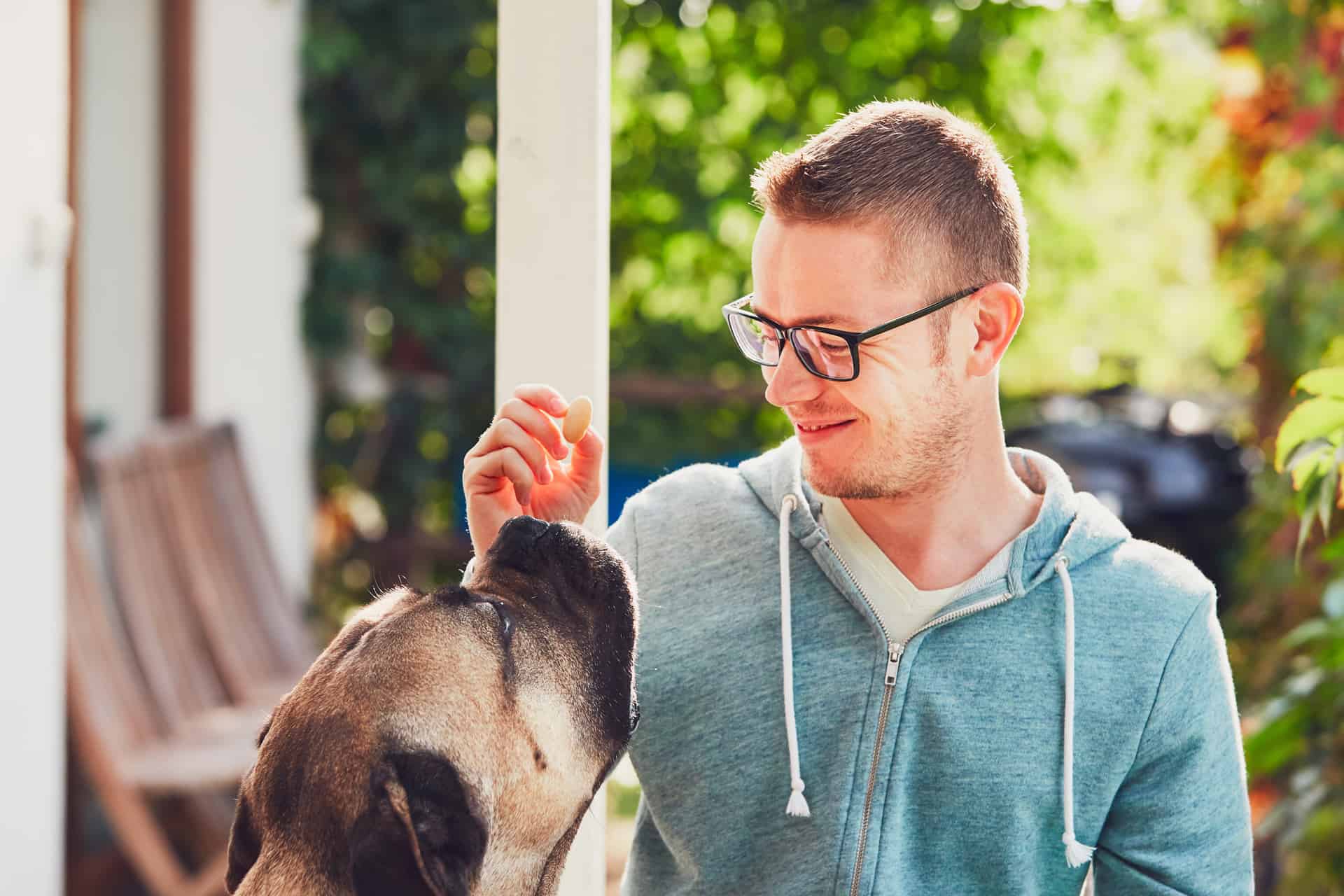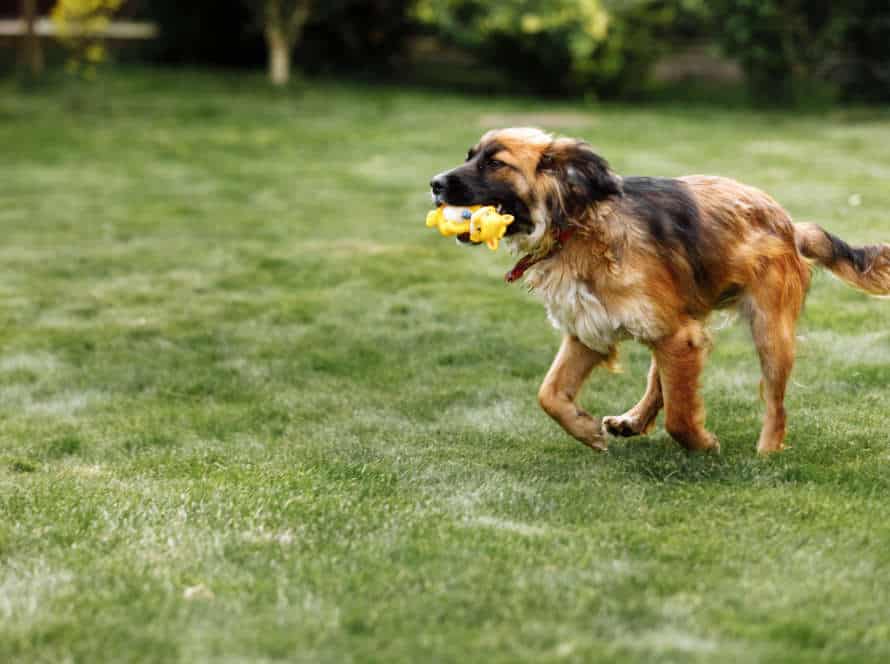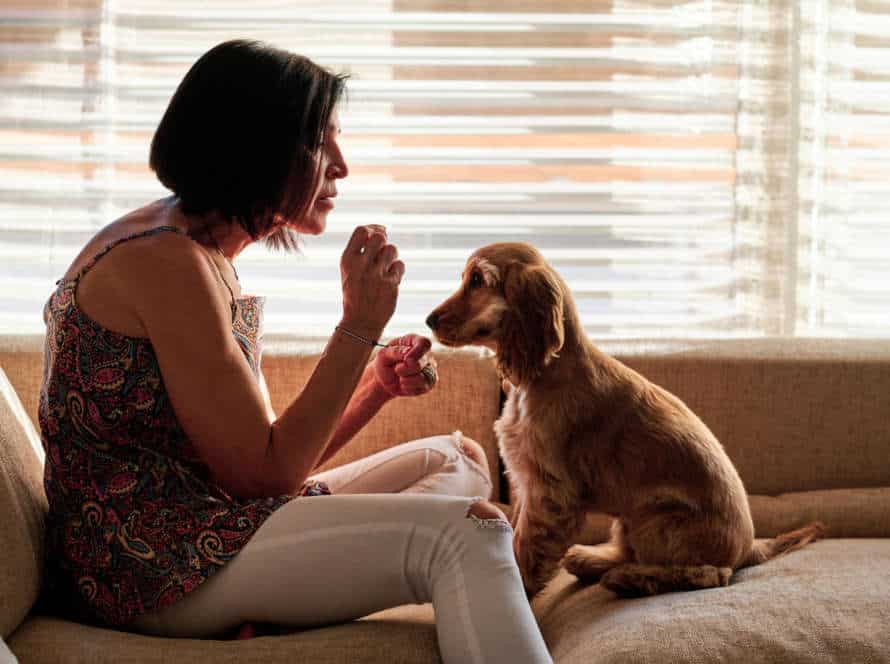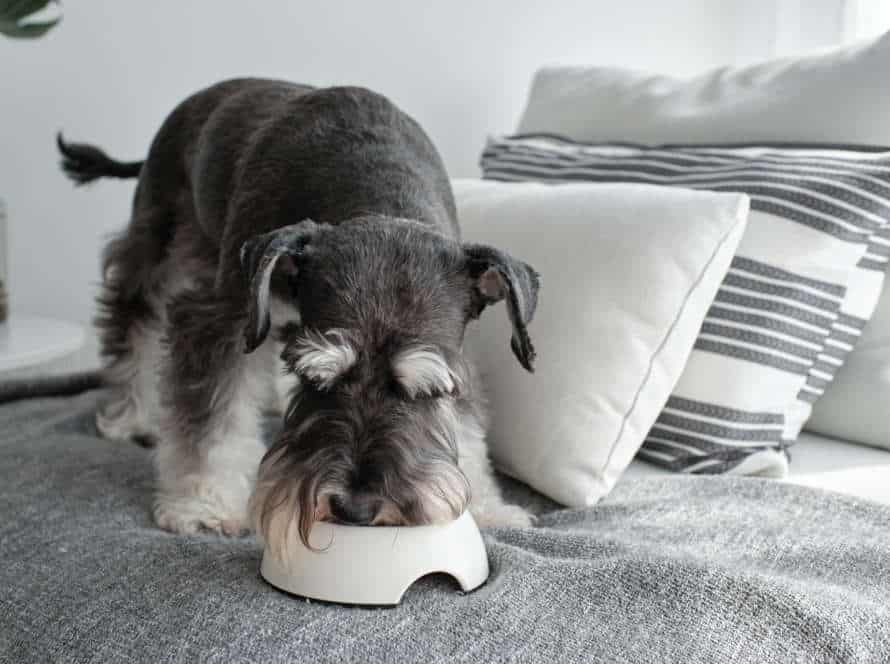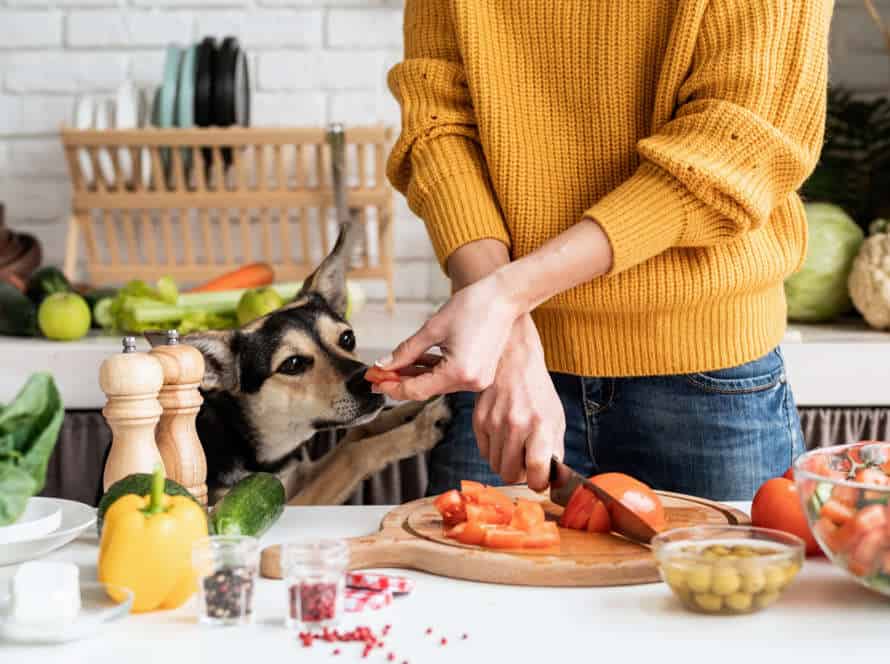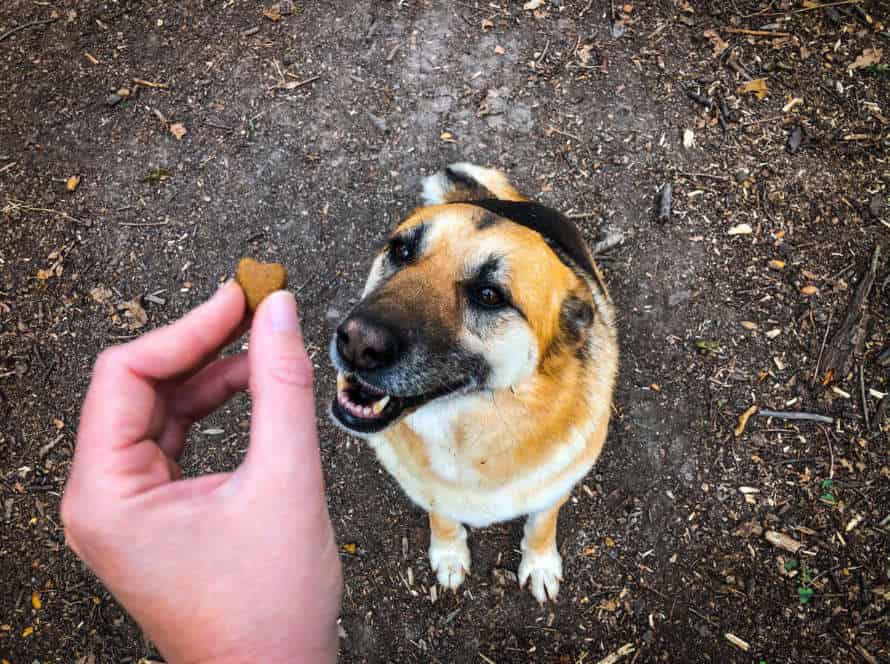Positive Reinforcement Techniques for Training Senior Dogs
Positive reinforcement is great for training senior dogs. They’re sensitive in body and mind. It also helps older dogs pick up new commands. Here are some tips to use positive reinforcement on senior dogs:
- Treats – Give yummy treats for good behavior.
- Praise – Say happy words and give cuddles for good behavior.
- Clicker Training – Use a clicker to mark good behavior, then give a treat.
- Consistency – Do this every time and reward good behavior, ignore bad.
Understanding Senior Dog Training
Training a senior pup is way different from educating a young one. Seniors often have had many owners, and have formed habits that might be difficult to undo. It’s vital to be aware of the senior dog’s difficulties, and how positive reinforcement tactics can assist you in the training of your elderly pup.
Benefits of Positive Reinforcement Training for Senior Dogs
Positive reinforcement training is a humane and efficient way to train senior pups. Here are its benefits:
- Mental Health: It can help senior dogs feel relaxed and confident.
- Physical Health: It involves giving treats, which can be a fun way to add physical activity.
- Bond: It can help build trust and create a deeper bond between you and your pet.
- Results: Studies show senior dogs trained with positive reinforcement learn faster and remember better than those trained with punishment.
Note: Senior dogs have unique needs, so create a training program that suits their age, energy level, and physical abilities.
Common Challenges in Senior Dog Training
Senior pups have special needs that can make certain aspects of training tricky. Here are some of the typical hurdles of training older dogs and how positive reinforcement techniques can help.
Physical Issues:
Senior doggos may have joint issues, hearing or vision problems. Adjust training methods to use other senses and physical skills to overcome these limitations.
Health Worries:
Senior dogs may need frequent potty breaks or may have incontinence. Deal with health issues before starting training, to make sure they stay comfy during.
Decreased Interest and Motivation:
Senior pooches may be less keen to learn new stuff, so it’s essential to make training more enjoyable and engaging. Use positive reinforcement techniques such as treats, toys, and lots of praise to keep ’em interested and motivated.
Cognitive Decline:
Senior dogs may have cognitive decline, making things like training harder. Utilise positive reinforcement techniques, be patient, consistent, and keep sessions brief.
Pro Tip: Include exercise in senior dog training to help keep them healthy and active. This boosts their learning ability and makes training more effective.
Key Factors for Successful Senior Dog Training
Training older pooches is achievable and great for their body and mind. But, to be successful, some key factors must be taken into account.
- Positive reinforcement is #1. Treats or compliments can motivate and reward your older pup. Plus, it’ll strengthen the bond between you two!
- Also, training should be tailored to your dog’s physical capabilities. Senior pooches may suffer from joint issues or be slower.
- Consistency and patience are a must. As the training could take longer for an older pup.
- Lastly, speak with your veterinarian. They can rule out any health issues that could impede training success.
By considering all these factors and adjusting your training methods, your senior pup will lead a happy and healthy life!
Positive Reinforcement Training Techniques for Senior Dogs
Positive reinforcement training is a kind and efficient way to train seniors canines. It involves praising good behaviour, and ignoring or diverting bad ones. Taking into account the age and energy level of an older dog is important. This form of training allows a senior dog to learn how to react positively to its surroundings.
Let’s investigate the positive reinforcement techniques for senior dogs.
Identifying Motivating Rewards for Senior Dogs
Identifying motivating rewards for senior dogs is essential. Here are techniques to use:
- Observe your dog’s behavior & preferences for rewards.
- Use verbal praise, petting & treats for desired behavior.
- Adjust rewards based on the dog’s personality & health.
- Experiment with treats & toys to find which motivate the most.
- Be patient & consistent in training & use positive reinforcement. This creates a positive association for desired behavior & reward.
Pro Tip: Senior dogs have different needs & limitations, but patience & understanding make positive reinforcement techniques effective, no matter the age.
Clicker Training for Senior Dogs
Clicker train your senior pup with positivity! Get a clicker and treats they love. Click when they do something good like sitting or staying. After the click, give them a treat. Do this several times until they understand the click is linked to the reward. Use the clicker and reward for more complex behaviors. Keep sessions short and finish with something good. Clicker training is both fun and helpful for their golden years!
Luring and Shaping for Senior Dogs
Luring and shaping are two techniques for training senior dogs using positive reinforcement. Luring is guiding your pup with treats, and shaping is rewarding them for closer approximations of the behavior you want.
Steps for these techniques:
- Luring:
- Use treats to guide your dog.
- Say a verbal command, like “sit” or “come”.
- Gradually decrease treats when your dog associates the command with the behavior.
- Shaping:
- Reward your pup for any behavior that brings them closer to what you want.
- Reward only behaviors that match the desired behavior.
- Say a verbal command and reward consistently.
With patience and practice, these positive reinforcement techniques can help you train older dogs and improve their behavior.
Managing Senior Dog Behavior through Positive Reinforcement
Positive reinforcement is an awesome tool to utilize when training your old pup and altering their conduct. When they do something right, reward them! This will motivate them to keep doing it. This type of training encourages relationship-building and creating a setting where your senior pup can learn how to act in the right way.
Let’s check out how we can use positive reinforcement to manage our senior dog’s behavior!
Teaching Basic Commands through Positive Reinforcement
As our dogs get older, their behaviour can change. It’s essential to manage it properly. A great way to do this is through positive reinforcement training. Here are some tips for teaching your senior pup:
- Find a quiet spot with minimal distractions to train.
- Start with basic commands like ‘sit‘, ‘stay‘, and ‘come‘.
- Give treats and praise to encourage obedience.
- Repeat the commands daily for consistency.
- As your pup gets better, make commands harder.
- Use positive reinforcement for any challenging behaviour, like aggression, barking, or destruction.
Pro Tip: Positive reinforcement is an amazing way to modify senior dog behaviour and strengthen your bond!
Addressing Problem Behaviors with Positive Reinforcement
Positive reinforcement is a great way to help senior dogs with problem behaviors. Here are some tips:
- Give treats, toys, or play time as soon as the dog does what you ask (like sitting or staying).
- Use positive words to praise good behavior.
- Clicker training is a method where the sound of a clicker shows the dog did something right, then they get a reward.
- Train the dog to settle down by giving them a long-lasting, tasty chew toy.
- Positive reinforcement can make the dog and owner closer. Just remember: it takes time and consistency.
Reinforcing Good Behavior in Senior Dogs
Senior dogs can still learn, just like puppies! Here are some tips on managing and reinforcing good behavior:
- Be consistent. Set clear commands and reward with treats or praise after your senior dog follows it.
- Use high-value treats they love but don’t get every day.
- No punishment techniques like yelling or hitting – this can cause anxiety and fear.
- Scratch and pet them while giving verbal praise.
- Keep training sessions short and simple – they may have health issues and cognitive decline.
- Be patient, positive, and empathetic. Senior dogs take longer to learn, but they can still enjoy it.
Pro Tip: Check with your vet to rule out any health issues causing unwanted behavior.
Implementing Positive Reinforcement Training in Daily Routine
Positive reinforcement is a great way to train any pup, no matter their age! It’s simple: reward good behaviors and ignore bad ones. Positive reinforcement is easy to do and makes sure both the pup and owner understand what’s expected. Let’s get into how to use positive reinforcement in everyday training!
Incorporating Positive Reinforcement Techniques in Daily Activities
Positive reinforcement techniques can have a major effect on training senior dogs. This involves rewarding good behavior, instead of punishing bad behavior. Here are some techniques:
- Treats: Use small, soft and tasty treats to reward good behaviour regularly.
- Praise: Praise your dog verbally and give them gentle pats and rubs as rewards.
- Playtime: Play fun games with toys to reward good behaviour, especially with active seniors.
- Consistency: Consistent positive reinforcement with an appropriate training program can help your dog form better habits.
Pro Tip- Use a clicker as a sound cue to signal the reward and communicate with your senior pet.
Setting Up a Training Schedule for Senior Dogs
As dogs grow older, changes in physical and mental abilities are evident. It’s important to adjust the training schedule accordingly. Positive Reinforcement Training is an excellent choice for senior dogs. This method rewards preferred behavior while ignoring undesired behavior.
Here are some tips to use Positive Reinforcement Training with senior dogs:
- Keep the training short and focus on one command.
- Use treats, toys and praise to reward the right behaviour.
- Physical punishments or negative reinforcement are harmful to senior dogs.
- Include mental activities such as puzzle toys or scent games to stimulate the dog’s brain.
- Be patient and consistent in your approach. End the session on a positive note.
By using these techniques, a comfortable and rewarding training plan can be created for your senior dog. It will help them stay active for many years.
Making Positive Reinforcement a Lifestyle for Senior Dogs.
As dogs grow older, it’s essential to make positive reinforcement a way of life for senior dogs. Here are some useful tips:
- Consistency: Ensure the same positive reinforcement methods are used by all who interact with your dog.
- Rewards: Give treats or verbal praise to reward good behavior, such as following orders, managing new situations well or displaying positive behavior.
- Simple commands: Keep commands simple, to make it easy for your senior dog to understand and follow.
- Patience: Remember, your senior dog has been doing certain behaviors for years, so changes take time.
- Positive Association: Link obedience to fun activities and playtime, to create a positive atmosphere.
It’s never too late to start using positive reinforcement for senior dogs. This can help create a healthier and happier lifestyle for both you and your pooch!
Pro tip: Always consult with your vet before beginning a new training program.
Frequently Asked Questions
1. What is positive reinforcement training for senior dogs?
Positive reinforcement training involves rewarding your senior dog for good behavior, rather than punishing them for bad behavior. This can include treats, praise, and other rewards that your dog enjoys.
2. Why is positive reinforcement training important for senior dogs?
Positive reinforcement training is important for senior dogs because it helps them learn and retain new behaviors while building a positive relationship with their owner. This type of training is also less stressful for senior dogs, who may not respond well to punishment-based training methods.
3. What types of rewards are best for positive reinforcement training of senior dogs?
The best rewards for positive reinforcement training of senior dogs are those that your dog enjoys, such as treats, praise, or toys. It’s important to find out what motivates your individual dog, as some dogs respond better to food rewards, while others may prefer verbal praise or a favorite toy.
4. Can positive reinforcement training be used for all senior dogs?
Positive reinforcement training can be used for most senior dogs, regardless of breed, size or age. However, it is important to take into account any health issues or cognitive decline that your senior dog may be experiencing when designing a training program.
5. How long does it take for positive reinforcement training to work?
The length of time it takes for positive reinforcement training to work varies depending on the individual dog and the behavior being trained. Some dogs may pick up new behaviors quickly, while others may require more time and patience. Consistency and repetition are key to successful training.
6. What are some examples of positive reinforcement training exercises for senior dogs?
Examples of positive reinforcement training exercises for senior dogs include teaching your dog basic commands like “sit,” “stay,” and “come,” as well as incorporating more advanced exercises like “roll over” or “play dead.” It’s important to start with simple exercises and gradually increase the difficulty level as your dog becomes more comfortable with the training process.

